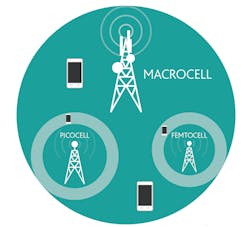Due to the level of data traffic being handled globally by LTE mobile operators, an increasing number of heterogeneous networks are being created. These “HetNets” consist of a mix of macro, pico, and small cells to maximize coverage and capacity. At cell boundaries, however, interference results when low-power small cells are added to macro cells in the same channel. Fortunately, enhanced Inter-Cell Interference Coordination (eICIC) can minimize this interference.
Anite has developed an LTE-Advanced device testing system claimed to be the first solution to provide flexible and comprehensive eICIC testing (see figure). Based on the company’s development toolset, Anite expects it to help users accelerate their LTE-A device testing programs.
Introduced in 3GPP release 10, eICIC employs the power, frequency, and time domains to mitigate intra-frequency interference in heterogeneous networks. It also enables the concept of “almost blank subframes” (ABSs), which do not transmit any traffic channels but function as general control channel frames.
As a key feature of LTE-A, eICIC enables mobile operators to control interference, ensuring that devices work optimally on the cell boundaries. Anite believes that its system allows the validation of complex scenarios in a test environment that resembles a live network. With this level of simulation capability, users can test LTE-Advanced devices in a controllable and repeatable way across all configurations.

